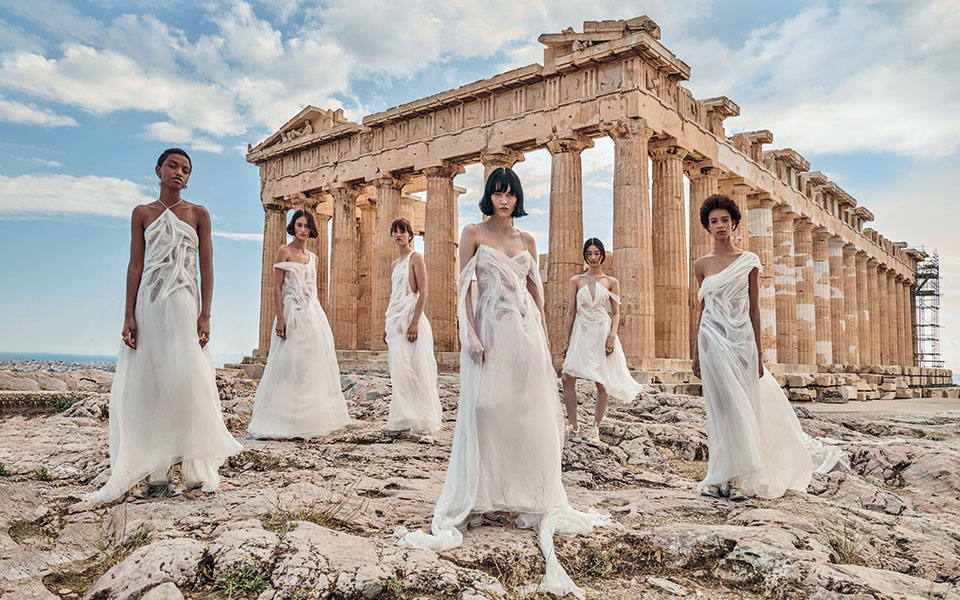“We thank you.” At first I thought it was more politeness and good manners than anything else. But as time passed, and because there were so few of us on the vastness of the Sacred Rock of the Acropolis, I was constantly given the opportunity to talk to people from the Dior team. And then I realized. Every time I expressed my enthusiasm for Dior selecting Greece as the location to present the Cruise 2022 collection, almost everyone practically rushed to interrupt me. Politely of course, but rather forcefully. “WE thank you”. Honesty and gratitude shone from their eyes as they looked into mine, and then gazed at the magical images naturally unfolding before us, with the eternal monuments of the Acropolis taking center stage, drenched in the sweetest summer light I have seen in recent years.
We were blessed and we knew it. And it was our guests who knew it more as they are not as fortunate as we are: to leave their house and soon find themselves on the Acropolis. This epiphany came to me during the five hours I spent with them on that unique afternoon on 18 June, as one of the few witnesses of the revival of the iconic 1951 Dior photo shoot on the Acropolis, when eight models posed for Jean-Pierre Pedrazzini in eight Christian Dior dresses for the French magazine, Paris Match.
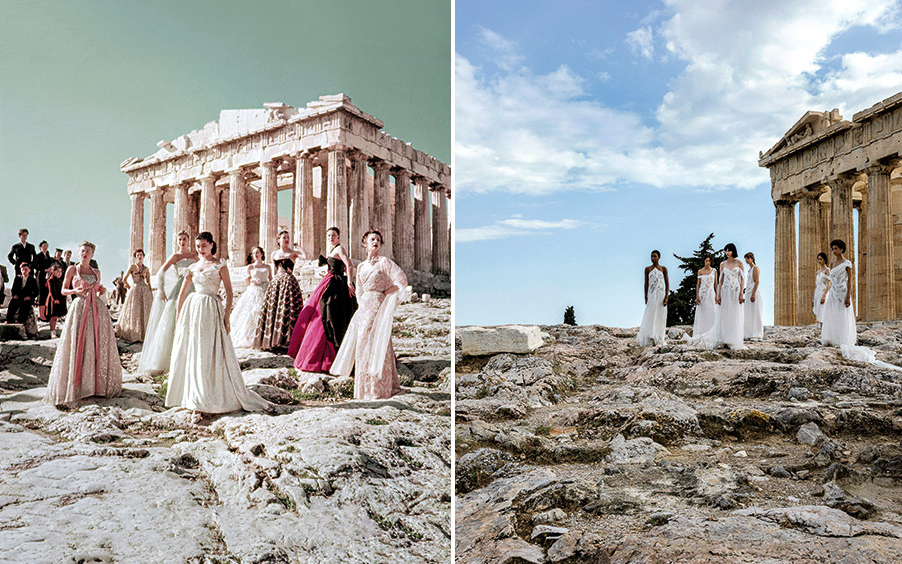
© Left: Jean-Pierre Pedrazzini / Paris-Match / La Scoop /Getty Images/ Ideal Image, Right: Myrto Papadopoulos
Free advertising
History would be rewritten 70 years later, in a changed Athens, in a changed world. The Parthenon and Dior are the only reference points. About 20 hours earlier, the Dior Cruise 2022 collection was presented at the Panathenaic Stadium, an inspired dreamy journey into universal ancient Greek roots that inundated social media accounts, influential websites and important publications across the world with images of Greece.
A clarification just to comprehend the scale of this exposure: the exclusive content Dior posted on social media regarding the show at the Panathenaic Stadium had more than 85 million views in just five days. This astronomical number does not include views from the other “Greek” content except the live show, nor the 165 million likes. We do not have to be social media gurus to realize the impact of this free advertising for our country, especially coming from a well-respected international fashion house with enormous influence over some of the most dynamic audiences around the world.
What took place during the two days of Dior’s presence in Athens is unprecedented and we have never experienced anything like it. The fashion show at the Panathenaic Stadium and the 1951 photo shoot revival on the Acropolis unfolded in a hyper-networked environment where photos, images and comments travelled at vertiginous speed across the globe.
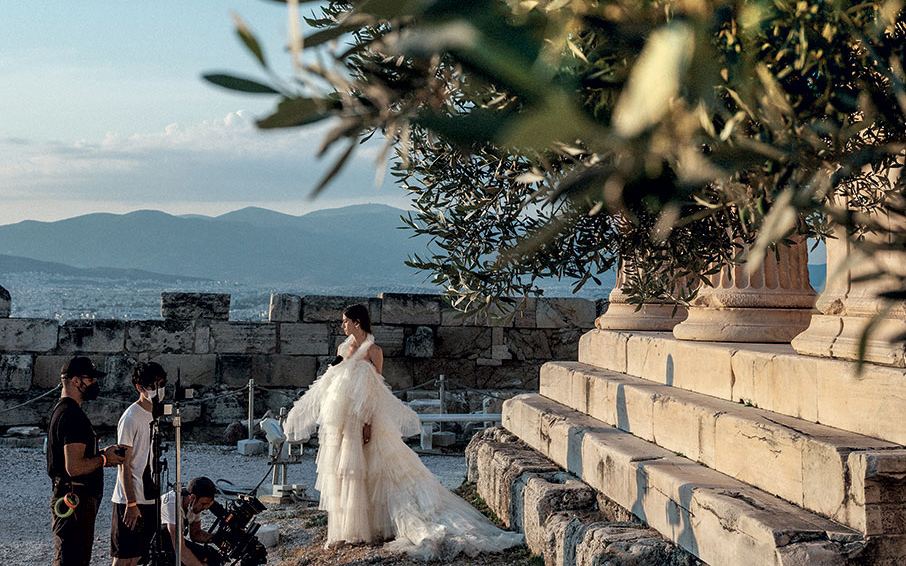
© Myrto Papadopoulos
In reality, Dior’s choice of presenting the new collection in Athens not only promoted the country but also brought in direct revenue for the state; some 700,000 euros just for the permits to conduct shoots in archaeological sites and museums. Since it is not just the Panathenaic Stadium and the Acropolis. Video and photo shoots also took place in the Ancient Agora, the Odeon of Herodes Atticus, at the Temple of Poseidon in Sounion and the Temple of Zeus in Nemea. In the context of this endeavour Dior’s creative director Maria Grazia Chiuri also needed access to Knossos, the Heraklion Archaeological Museum, Akrotiri in Santorini, Delphi and Eleusis.
Negotiations between the French fashion house and the Ministry of Culture were based on two parameters – the official “pricelist” for the relevant permits, but also considering the lost revenue from closing the sites on specific days. For instance, the early closure of the archaeological site of the Acropolis for the needs of this iconic shoot on the evening of June 18th (from 5-8pm in the evening) cost the French more than 200,000 euros, based on equivalent revenue records from 2019.
Backstage
But how did we get to the revival of the legendary 1951 photo shoot? How did we get to the point where Dior’s creative director Maria Grazia Chiuri is admiring, together with her daughter Rachele, the aethereal slender models dressed in stunning minimal, milky white “chitons” as they become one with the incomparable beauty of the Acropolis monuments?
That said, Dior’s chief communications officer Olivier Bialobos does not fully agree with the word “revival” to best describe the aesthetic spectacle taking place before us. “I would say that it is a new view of a historic photograph. We have definitely not attempted to recreate the 1951 photo”.

© Polis Ioannou @ epitomexyz
They first officially tested the waters in the new year, in January. The initial request was to present the fashion show on the Acropolis, the one we finally saw at the Panathenaic Stadium. According to reports, Minister of Culture Lina Mendoni refused this request immediately. The reasons were not entirely based on ethical grounds, as among other things it would create a precedent that would make the operation of any future requests more difficult. Supposing the Ministry had granted permission, the Sacred Rock would not have been able to withstand the technical “weight” of such a demanding event. For instance, where would the live band be set up, where would the journalists and guests be placed? So the issue was not only ethical, but also practical.
The counter-proposal from the Ministry of Culture was to take advantage of the Ancient Agora and the Temple of Hephaestus. Ultimately, the scope of the project required a space the size of the Panathenaic Stadium. The revival of the iconic photo shoot came into the picture during the third meeting between the two parties. “It was something that we could handle”, sources close to key leaders in the Ministry of Culture recall, “and the final result completely justifies our decision”. The project was also a useful crash test for the Greeks, as it required the collaboration between at least a dozen ministries, services and organisations, and this endeavour ended with great success. The Ministries of Tourism and Culture, and the leading politicians Haris Theoharis and Lina Mendoni, were in the front line.
Daring and prejudice
Of course, opinions in the circles of Greek archaeologists on the staff of the relevant ephorates were not so consensual. The offering of archaeological sites to fashion houses has traditionally been a taboo that demands skillful handling. The basic argument of “commercialization” of the monuments usually does not apply, because as in the case of Dior, the photographs taken on site will not be used in the advertising campaigns for the new collection presented at the Panathenaic Stadium, but will be used exclusively for Dior Magazine.
And here we come to the point where the dangers are excessively magnified and the benefits are undermined. Which brings us to the fake news du jour – that permission was supposedly given for “trucks” loaded with equipment to go up to the Acropolis. But the equipment and clothes were transported to the top of the Sacred Rock using the construction crane used by the Acropolis Restoration Service (ARS), while the old Acropolis Museum (atmospherically empty and devoid of its previous glory) was used as a prep space for the models and settings, as well as for kitchen services (food and beverages were only permitted here), equipment storage and hygiene facilities. Of course, all the safety protocols for the pandemic were adhered to.
The aftermath of the “trucks” that would besiege the Acropolis became widely known. “Things are not much different in Italy”, Maria Grazia Chiuri rushes to assure me with a big smile. “We are too Mediterranean about our relationship to our monuments, wouldn’t you agree? In the end, everything went exceptionally well, we had a wonderful collaboration and today we can all enjoy the fruits of this collaboration. Not to mention that people often believe these initiatives are based on profit, when that is not the case. Nevertheless, I must admit that the process is full of pleasant surprises, such as last year in the middle of the pandemic when I went to visit the Bishop of Lecce and his welcome was beyond our expectations. He understood our spirit immediately and said, “I trust you, go ahead”.
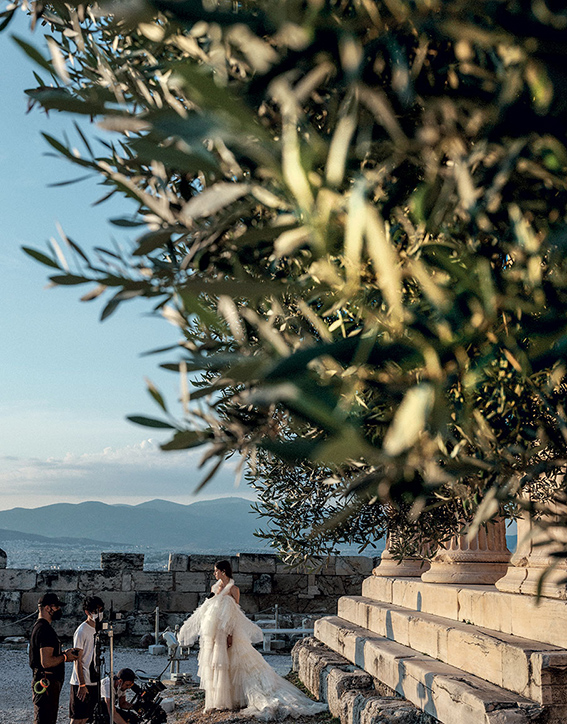
© Myrto Papadopoulos
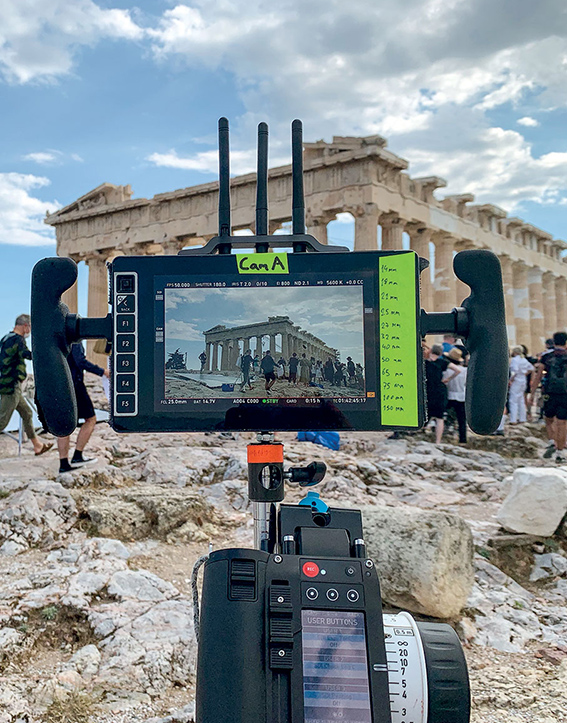
© Polis Ioannou @ epitomexyz
Fashion or Art?
Dior’s creative director, with origins from Apulia – where the last Greek-speaking villages of Italy are located – entirely free from the last traces of anxiety, tells me that she always wanted to study Art and now, as she interacts with the masterpieces of classical Athens, she realizes the fluidity of the boundaries between art and fashion. “Sometimes I fear that I rubbed off on my daughter, who is studying Art. Thankfully, she seems to be enjoying it”.
Architect Mihalis Lefantzis, Head of the Department of Archaeological Works and Studies at Ephorate of Antiquities of Athens (which the management of the finest Athenian monument falls under), interjects in my brief conversation with Maria Grazia Chiuri. Having studied in Italy and being fluent in Italian, they begin a very interesting exchange of opinions that literally flows like water. He seems genuinely touched by everything he has witnessed up to this point.
After the shoot with the Parthenon in the background, many more followed in front of the Temple of Athena Nike as the sun was setting. The fact that the French selected 10 Greek female photographers to work with exclusively on this project is indicative of their generosity and the spirit of their project.
Mihalis Lefantzis seems relieved and emotional at the same time. He always had a positive attitude towards the project, so the result only justifies his stance. Now he offers a very personal reflection on this unique experience. “The breaks, pauses and rhythm of this visual event were very interesting”, he says. “Until recently, the old school “gesture” of contrapuntal breaks from garments in harmony with fragments of monuments in the background attempted a formalistic veneer of sanctity, frozen in space and time. But there is nothing static or unchanged about sanctity.
Despite the contrapuntal breaks with numerous historical references, I discerned that Dior’s modern attempt is not a simple ‘promotion’ of the iconic brand on the Acropolis; it is a profound dialectic interaction with the monuments, redefining the idea of sanctity with particularly refined aesthetic criteria. On the opposite end of the spectrum I see a conservative version of this veneer of sanctity, which is gambled with to promote subjective needs and claims on monuments and archaeological sites. Of these two versions, the more experimental but also more progressive is the former, the one adopted by the Greek state.”
This article was previously published by “K” Magazine.

